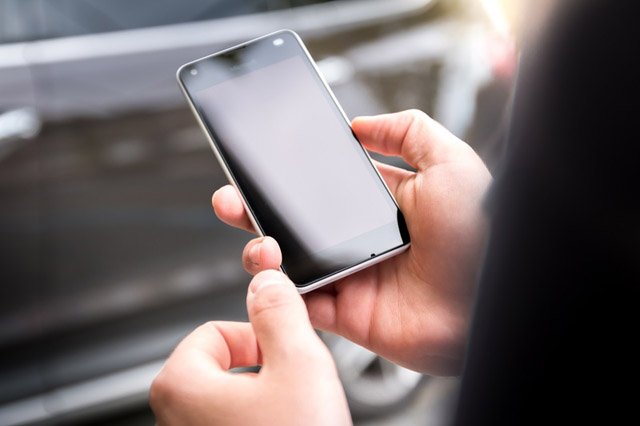Latest news about Bitcoin and all cryptocurrencies. Your daily crypto news habit.
The Massachusetts Institute of Technology has embraced blockchain technology to usher in a new era of digitized academic diplomas.
Blockchain may be most well known for being Bitcoin’s supporting technology, but it can offer so much more. This decentralized network provides its users with immutable records and security, showing businesses over a range of industries how beneficial it can be for them. This is because each transaction, or block, on this distributed database is encrypted and timestamped once it is recorded. It is then added to the previous block on the chain, hence the name, thereby creating a secure timeline for each transaction.
Because it is a consensus-driven network, each record needs to be approved by the other users. In addition, these records cannot be changed or altered in any way as it would affect the rest of the blocks on the chain. Now blockchain technology finds itself in the hallowed halls of the Massachusetts Institute of Technology.
MIT has issued traditional paper credentials to more than 207,000 students for nearly 150 years, but 2017 saw something different. As its name suggests, MIT embraces the innovations of technology, and what better way to do this than to take advantage of all the benefits that the revolutionary blockchain technology has to offer?
As part of a pilot program, this summer saw 111 June graduates have their diplomas available on their smartphones via an app, as well as in traditional paper format. The former option was made possible through a partnership between the MIT Registrar’s Office and Learning Machine, a Cambridge, Massachusetts-based software development company. The Blockcerts Wallet app will allow students to share their hard-earned diploma with whomever they choose, including potential employers. Because the app is built on blockchain technology, the diploma cannot be altered and is completely secure. In addition, Touchstone, which is MIT’s identity provider, is integrated into the app.
THE POWER LIES WITH THE STUDENTS
Even though providing digital credentials is not a new concept, this specific trailblazing initiative will actually give students complete autonomy over their academic records.
Mary Callahan, Registrar and Senior Associate Dean, says:
From the beginning, one of our primary motivations has been to empower students to be the curators of their own credentials. This pilot makes it possible for them to have ownership of their records and be able to share them in a secure way, with whomever they choose.
Because of the technology behind this concept, these records and diplomas will be permanently accessible and available.
Chris Jagers, CEO and co-founder of Learning Machine, says:
MIT has issued official records in a format that can exist even if the institution goes away, even if we go away as a vendor. People can own and use their official records, which is a fundamental shift.
MIT’S FASCINATION WITH BLOCKCHAIN
As soon as Callahan heard about blockchain technology, she was interested in if it could be used in their institution to issue digital diplomas. At that time, Philipp Schmidt, the director of learning innovation at the MIT Media Lab, had already been experimenting with the technology. Schmidt had actually begun issuing internal and non-academic digital certificates to his team in 2015.
Schmidt had noticed that even though the popularity and adoption of decentralized technology on an informal online learning sphere was increasing, there was no way of tracking and managing these academic accomplishments. This is why he looked into finding a “more modular credentialing environment, where you would get some kind of recognition for lots of things you did throughout your life.”
A STRATEGIC AND SUCCESSFUL PARTNERSHIP
His interest was in line with Learning Machine’s vision, and they spent 2016 working together towards the end result: Blockcerts. This open-source toolkit can be used by any developer or school to verify blockchain-based educational credentials. Callahan and Jagers partnered up to launch the pilot program to test Blockcerts’ capabilities.
“Mary was very up-to-date and had been introduced to concepts of cryptography, so she and her office were really excited to try out this technology,” says Jagers. Callahan added that “it was the perfect confluence: technology developed at MIT and a vendor who was aware of MIT’s culture as a community that values learning, at a time when a comprehensive record of lifelong learning was an evolving need.”
WHY BITCOIN BLOCKCHAIN IS BEST
Even though Blockcerts operates on the Bitcoin blockchain, there are many other blockchains out there. However, Jagers had added that Bitcoin blockchain serves all of Learning Machine’s purposes as security is its top priority, even over speed, cost, or ease of use. He explained:
We believe it’s still the right choice for official records that need to last a lifetime and work anywhere in the world.
The platform noted that, even though this type of technology would pave the way for official and recipient-owned and managed credentials, there was an issue. Because of the encryption requirements, each user needed both a private and a public key. Jagers says:
It’s a huge roadblock to tell students to go generate public-private key pairs for the Bitcoin blockchain, Nobody has any idea what you’re talking about.
That’s where the Blockcerts Wallet comes in. A public-private key pair is generated once the student downloads the app. The public key is sent to MIT and written into the digital record. A one-way hash, which is a string of numbers for verification purposes, is added onto the blockchain. The timestamped transaction, and not the diploma information, simply shows that MIT created a digital record. MIT will then email the diploma, which will be in the form of a JavaScript Object Notation (JSON) file, which will have the student’s public key inscribed into it. The app, which will be on the student’s smartphone, will have their unique private key, proving that they do own that diploma.
Students will easily be able to share their diploma without any intermediary and with no costs involved. The recipient of these shared credentials, whether an employer or another university, will easily be able to verify the information by uploading the diploma on an MIT portal, without the need for directly contacting the institution.
POSITIVE OUTCOME AND FEEDBACK
Callahan is happy with the outcome of the initiative and has received inquiries about the pilot from other universities as well as her colleagues in the European Commission. She says:
Our goals were to build our own knowledge and confidence, while utilizing student feedback. We believe this adds great value to higher education. We’ve just begun to scratch the surface of where this will lead. It’s really an exciting time.
HOW BLOCKCHAIN CAN IMPROVE DIFFERENT SECTORS
This technology could pave the way for creating stackable certificates on the network. Individuals would then be able to link all of their diplomas or certificates from every university they may have attended onto one record. This could be done using the embedded links on these pre-existing digital records to create a new and comprehensive meta-record.
Jagers says:
It’s not just about solving a problem. It really is trans formative, and it could be as big as the web, because it affects every sector. It’s not just academic records. It’s being able to passively know that digital things are true. That creates a whole new reality across every sector.
INCORPORATING BLOCKCHAIN INTO MIT’S LANDSCAPE
MIT’s initiative has been extended to include students who graduated in September. Callahan hopes to extend this offering even further to students in other learning programs such as MIT Professional Education, the Kaufman Teaching Certificate Program, and the Bernard M. Gordon-MIT Engineering Leadership Program.
Vice Chancellor Ian Waitz referred to the pilot program as “exciting, and necessary, to keep up with the demands of our on-campus students and learners around the world.” Waitz adds:
It’s also gratifying to see how innovation happens everywhere here, especially in places where you might not expect it like our Registrar’s Office. I applaud their creative experimentation and see their approach as a model and source of inspiration for others to push academic boundaries.
What do you think about using blockchain technology to easily and securely share academic credentials? Do you think other universities will follow suit? Let us know in the comments below!
Images courtesy of Wikipedia, PxHere, Bitcoinist archives, and Flickr.
The post MIT Uses Blockchain to Give Students the Power of Autonomy appeared first on Bitcoinist.com.
Disclaimer
The views and opinions expressed in this article are solely those of the authors and do not reflect the views of Bitcoin Insider. Every investment and trading move involves risk - this is especially true for cryptocurrencies given their volatility. We strongly advise our readers to conduct their own research when making a decision.




